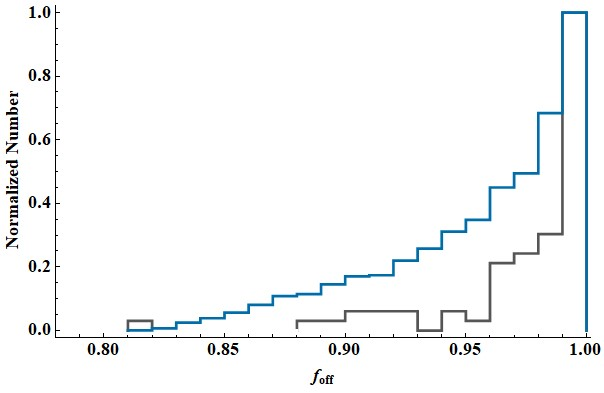

Researchers simulate the RRAT radio-off fraction
There are objects in the Galaxy that emit single and isolated radio pulses. They are not radio pulsars, because their pulses are not regular and it could take seconds to hours until another pulse can be detected.
However, they are thought to be pulsars but with a different name – rotating radio transients or RRATs. The first RRAT was discovered in 2006 in the archival data from the Parkes multi-beam pulsar survey in Australia.
The reason why RRAT pulses are so scarce is unknown. Some observations show that RRAT emission occurs only under specific “favorable” conditions. However, the occurrence of such favorable conditions is unpredictable and appears random.
The researchers from Xinjiang Astronomical Observatory (XAO) of the Chinese Academy of Sciences (CAS) used simulation to model the distribution of the radio-off fraction for the observed RRATs.
In this work, they assumed that a RRAT emission requires (i) the existence of a favorable emission condition, under which (ii) a pulse is actually emitted, and both events are random. A comparison for the observed radio-off fraction and that from their simulation is shown in the figure.
The results are published in Astronomy and Astrophysics.
RRATs and pulse nulling may share similar origins. The important difference between RRAT and nulling is in the default emission, where the former tends not to emit by default. In addition, the rate of emission changes over time, with higher rates favoring short rotation period.
The results demonstrated that a RRAT does not emit by default, and a change is required to switch on the emission. Such a change is a random process of a low probability occurrence.
Normalized distributions of the radio-off fraction from 70 observed RRATs (black) and from our simulation (blue).
Contact: Rai Yuen
Xinjiang Astronomical Observatory, Chinese Academy of Sciences
Email: ryuen@xao.ac.cn
Article link: https://doi.org/10.1051/0004-6361/202348778
Attachment Download: